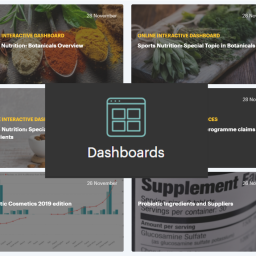Video Transcript
Hello and welcome to this excerpt from our marketing workshop, which looks at how Lumina’s product data can be used to find niche keyword opportunities. The following clip is from the B2C chapter of the original video and demonstrates how you can utilise free-to-use SEO tools to extract search trend data. Keyword research like this is critical for informing your content strategy so that your business website attracts traffic and conversions from search engines like Google. If you’re not familiar with search engine optimisation, feel free to pause this video and take a look at the glossary on the screen now.
Discover search trends for niche keywords with Google Ads keyword planner
[on Mergewords tool]…click “Merge” and very quickly I’ve generated over 1,000 keyword ideas. Not all of them will have search volume, so that’s the next thing we need to establish. We can do this through Google Ad’s Keyword Planner.
You can access this through your Google Ads account by going to “Tool & Settings”, then clicking “Keyword Planner”. Click “Get search volume and forecasts” and paste your list from Mergewords in the box. Click “get Started”.
When it’s finished loading, go to “Keywords” and then the “Historical Metrics” tab. I would suggest selecting at least a 24-month view of the data as it will help you establish if there are any seasonal search patterns you need to be aware of. Order the search results by “Avg. Monthly searches” to get a quick idea of which of your keyword ideas has interest from consumers.
Now we get to the really informative part, where you can look at search data for your niche keywords and understand which have rising interest from consumers. For example with this keyword – “lactobacillus reuteri drops” – you can hover over the trends chart next to the avg. monthly search and see that, particularly over the last 18 months or so, there has been rising search for this keyword. If you offer this type of product, you now know optimising that product page to include information on the species and format in the title or product description is going to be worthwhile, and possibly a quick win for your business.
As another example you can scroll a little further down to see any more niche keywords that have gained rapid momentum more recently. For example, with “lactobacillus gasseri capsules”, you can see that even though the average monthly search volume for the last 24 months is 30, in recent months this is more like 90 searches a month. From about 12 months ago until now the search volume has increased 9 fold. Again, if your business sells a probiotic capsule with lactobacillus gasseri, this is an important insight. That’s just two examples – there’s lots of detail you could go into here.
View all our reports
See the range of reports we offer for the probiotics market including market overviews, deeper examinations of niche markets, country insights and more.
Enrich your content with data from Answer The Public
It’s important to know what your next step would be. Make a note of any keyword opportunities and build a keyword master list, which you can use to prioritise actions based on the impact you think you will get from each change to your website or content page and how long it will take you. That’s going to provide some helpful guidance for your content strategy going forward.
How might you take this information forward and start to think about creating robust content on a topic? Using our “lactobacillus reuteri drops” example – let’s say I wanted to create a very informative content page on this species that will attract consumer search, paint my brand in a positive light and hopefully generate sales too. There’s a couple of free-to-use tools that you can quickly obtain good information from.
Answer The Public is based on Google “suggest” data. All you need to do is paste your keyword in the field here and click search. The nice thing about Answer The Public is you have this very visual question wheel which helps you understand at how consumers are searching about this species. You can also put it in a data table and run these keywords back through keyword planner to prioritise what your content should cover based on what queries have the most search volume.
Uncover the questions consumers are asking with AlsoAsked.com
Another good resource for finding out what questions your consumers are asking about a particular topic or element of a product is a free-to-use tool called AlsoAsked.com. Unlike Answer The Public, which is based on Google suggest data, AlsoAsked is based on People Also Ask (PAA) data from the Google search results pages. Here you can specify a particular language and region.
We can look at questions about lactobacillus reuteri in the United States in English. Here we are on the results page – you can save this as a CSV file and save the nice visual as a PNG image. This is the starting point for how you might create B2C content that’s going to attract consumers from the search engines and hopefully lead to sales and conversions.
Access the full workshop
Talk to us today about how a Lumina Intelligence probiotics subscription will guide your business strategy.
















